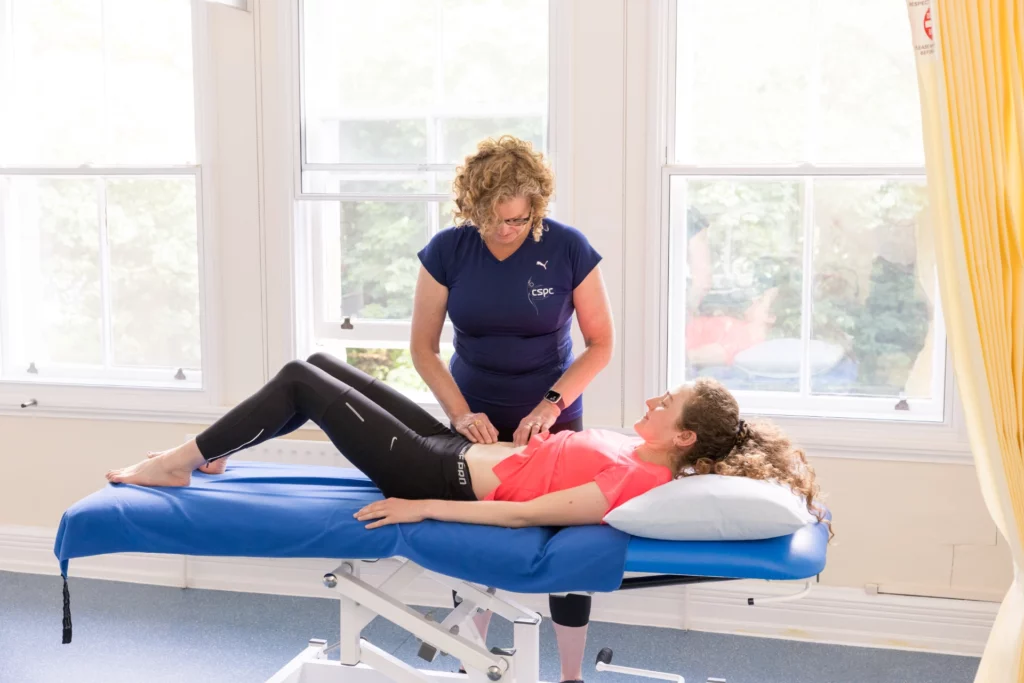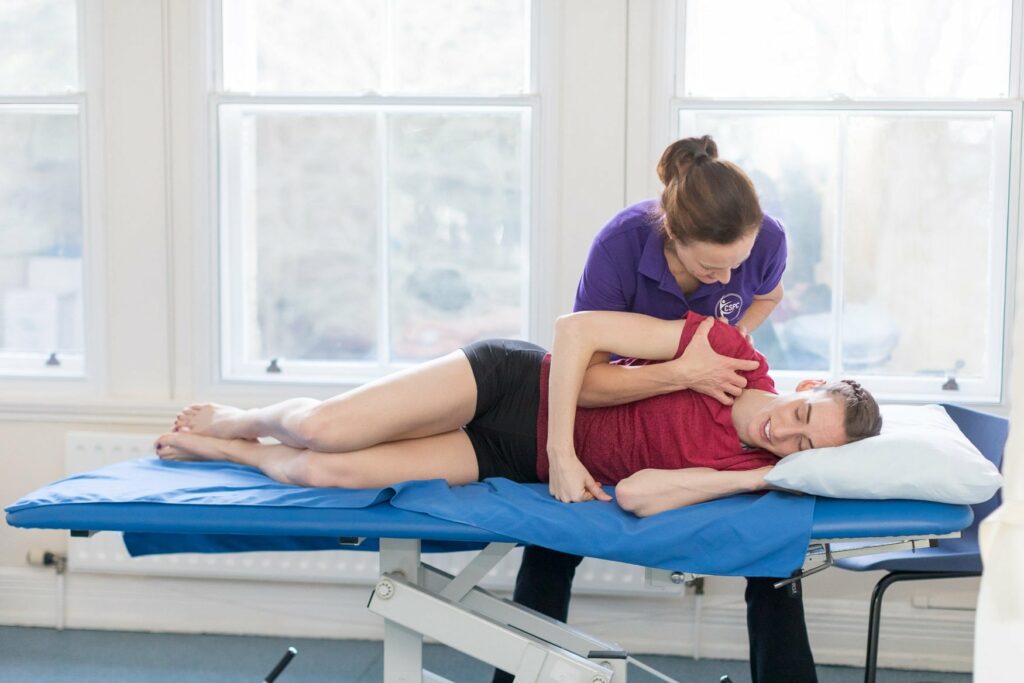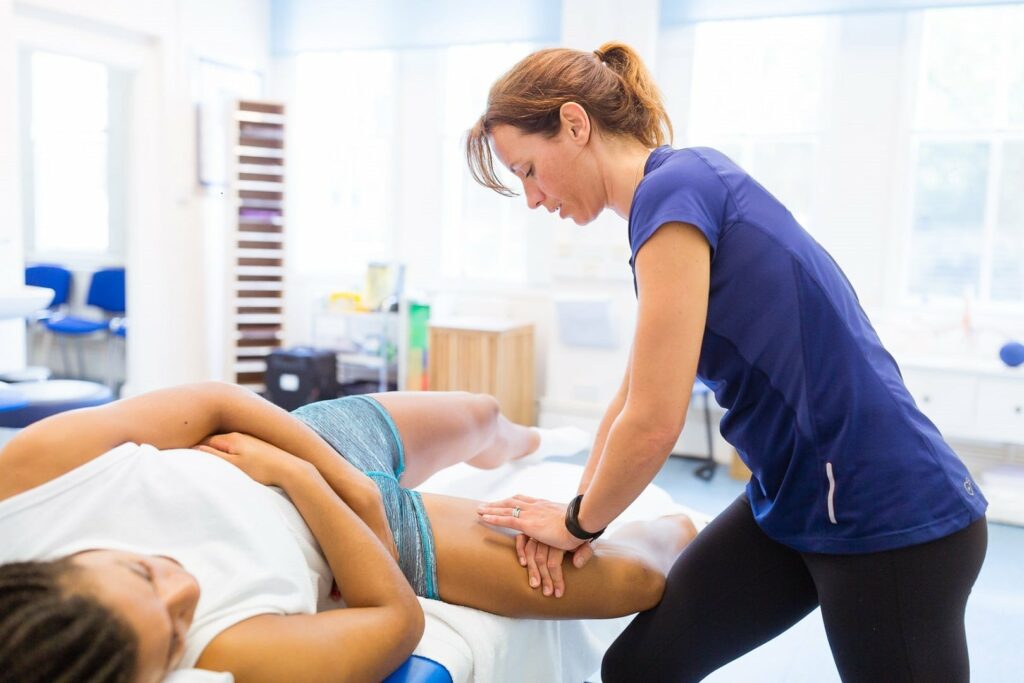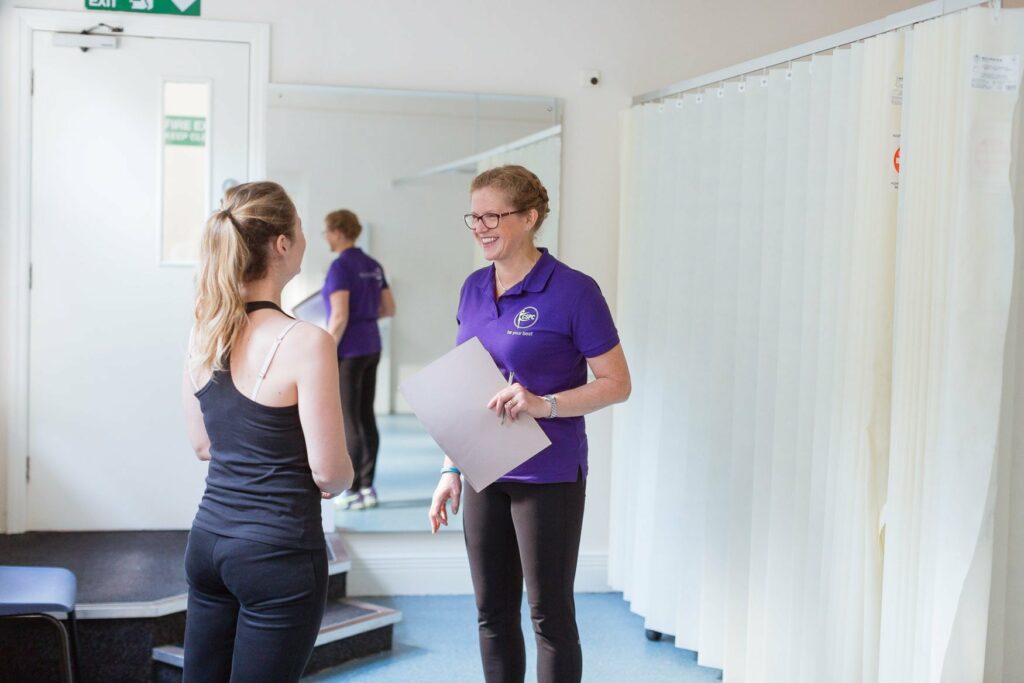After the baby is born, we would advise you to continue to work with your physiotherapist to help your body recover. Pregnancy, the changes to your body and the increased mobility in your ligaments, not to mention the stress that the birth of the baby puts on your body, all have a big effect on the body and the effects of this need to be addressed so that you can embark on the next phase in a healthy way!
Ligamentous laxity unfortunately doesn’t go back to where it was pre-pregnancy, therefore it is important to work on your strength and stability to protect your joints.
After the baby is born, six weeks would be advised as the earliest time for resumption of exercise, with exception of low level core, glutes and foot/calf strengthening which can be done earlier. This falls in line with what would usually be the first postpartum check at 6 weeks. Within the next six to twelve weeks, it should be possible to slowly resume training as able. It is a really good idea to incorporate calf and foot strength without going into excessive dorsiflexion, core work, drill work, and movement pattern work, especially if you were doing these before.
You may find that your feet are flatter during and after the pregnancy. If this is the case, it is vital that you work on your foot and calf strength and wear supportive shoes. You may also need to be assessed by the podiatrist if things have really changed!

Abdominal strength
It is important to get some guidance to regain abdominal strength. The abdominal muscles are stretched throughout the pregnancy, and lose strength, function and tone. The muscles need to be retrained to work properly once the baby arrives. The external oblique muscles in particular work at a completely different angle during the latter stages of the pregnancy and need to be retrained to work in the correct way. There will also be a normal split in the tendon vertically down the middle of the abdominal muscles (diastasis recti, or rectus diastasis), which means care will need to be taken in the rehabilitation of the abdominal muscles after pregnancy, so that as the muscles work, they draw the abdominal muscles together in a strong, functional way, narrowing the gap. You should avoid things like sit-ups, planks, press ups and leg raises until you are ready- one thing that will catch you out will be getting out of bed without rolling onto your side!
Please see the section on rectus diastasis/abdominal separation. The rectus diastasis test can be used to check you are doing your exercises correctly and monitor if you are ready to progress them.


Caesarean sections
If you have had a Caesarean section (C-Section), it is important to take things easier than if you have had a vaginal birth. You doctor should be able to advise you, but generally you will be advised to wait for 8 weeks, before starting to think about doing more exercise. You will be advised not to lift much weight and not to drive.
After the first week, and with your doctor’s permission and if there are no complications or bleeding from the wound, then it can be beneficial to walk up to 10 minutes a day to help prevent blood clots in the lower limb. With your doctor’s permission, you can gradually increase that over the next few weeks, up to walking about 20-30 minutes in weeks six to eight.
You can do pelvic floor exercises immediately post birth and within the first week. As you go into the second week, you should be able to start doing pelvic tilts, gently using your lower tummy muscles, to tilt your pubic bone up towards you.
After the 8 week point, as long as your doctor is happy with the progress, you should test your abdominal function using the rectus diastasis test – see the section on rectus diastasis/abdominal separation – and you should then be able to commence a post pregnancy programme at week 1 (even though you are actually at week 8).
If you have rectus diastasis or have had a C-section, you should definitely avoid exercises that put a lot of strain on the abdominals like sit-ups, planks, press ups and leg raises. They can be brought in later on, after the abdominal strength and correct activation has been gained.
You should also avoid anything that stretches the abdominals and the scar for the first three months, as the scar needs to knit well.
Avoid heavy lifting (including car seats!), jogging, jumping for the first 3 months.
Please see the section on rectus diastasis. The rectus diastasis test can be used to check you are doing your exercises correctly and monitor if you are ready to progress them.
C-section scars
In a C-section, the abdominal muscles rarely have an incision through them (and most will have the vertical split in the linea alba naturally by then), however the outer sheath of the main muscle (the rectus abdominis), and the skin and fascia are cut through.
Any operation results in scar tissue as the wound heals. Scar tissue, if not looked after, can thicken and get bound down to structures underneath it. This can cause issues with general mobility, abdominal muscle mobility, pain and even stiffness into the hips, and affect strength gains. It is important when the scar is healed to massage gently into this with Bio Oil, or something similar, to facilitate healthy healing of the scar. Your physio can advise you on this. Even chronic C-section scars can be improved by manual therapy, and it is important to do so if it is causing an issue. It can do this even many years later.

Musculoskeletal changes
Musculoskeletal changes include reduced thoracic and lumbar rotation and counter rotation, which will affect walking, running and exercising. After the baby is born, it is important for this to return to normal ranges before resuming and increasing activities as there are a number of potential injuries than can arise from reduced rotation. A pelvic realignment and thoracic rotation assessment should ideally be done by a physio in the first 6-8 weeks, and monitored as exercise is resumed.
The abdominal viscera can be affected by having reduced space during the pregnancy. Reduced mobility in the viscera can have an associated effect on back and pelvis mobility, on muscle flexibility and can result in neural symptoms and altered breathing. It can take six weeks for the uterus to involute (return to normal size) and four to six weeks for kidneys to involute. Breathing and mobility exercises can help with this.
See why patients
love CSPC Physiotherapy



